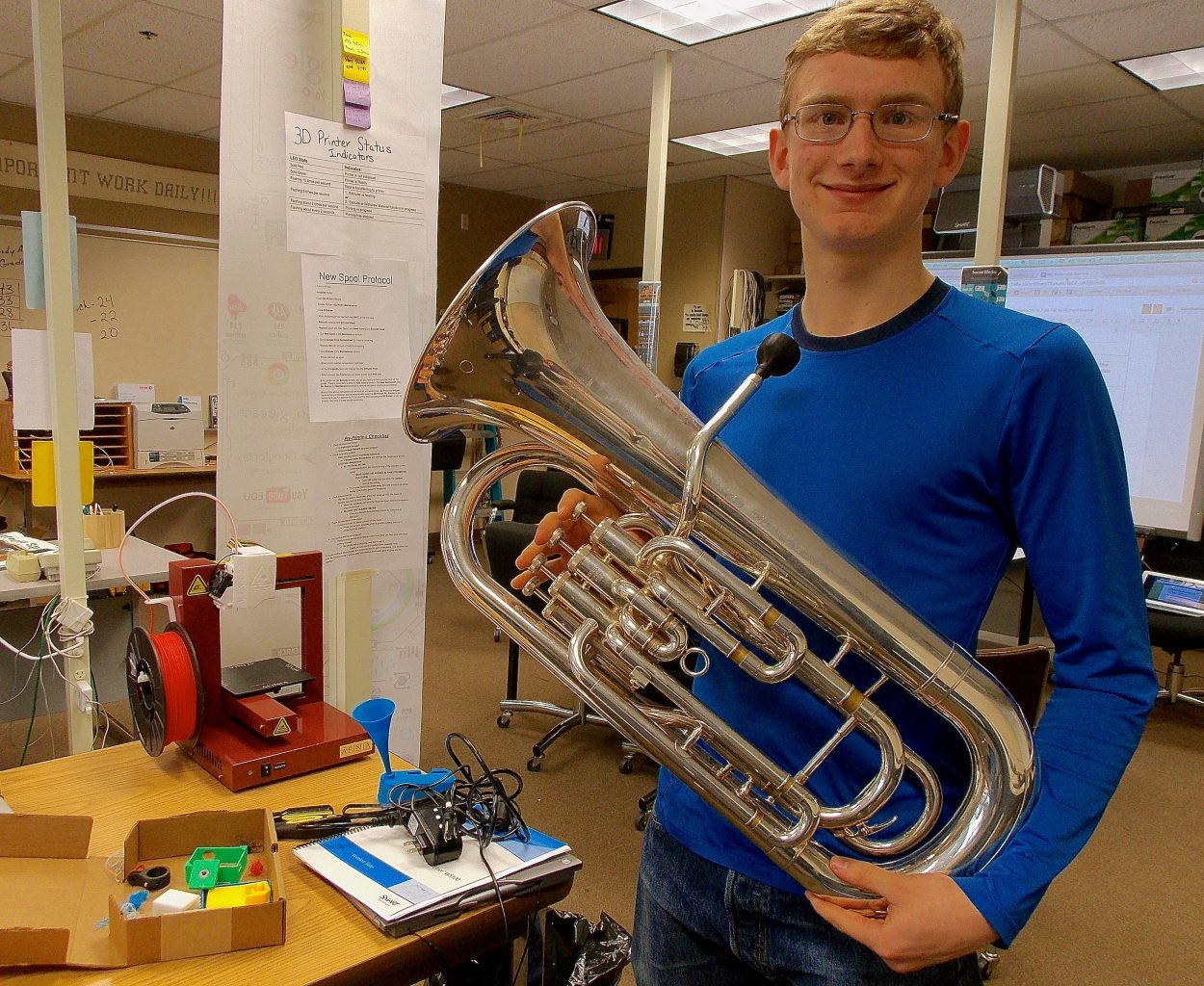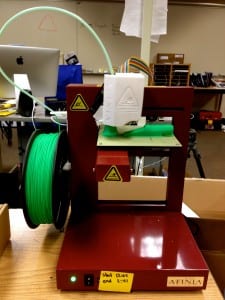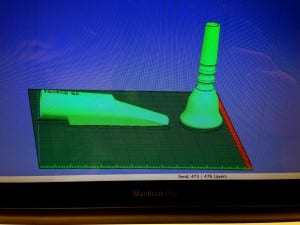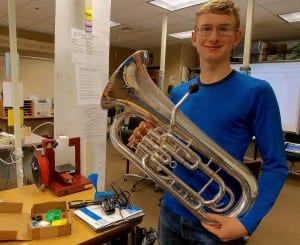
Skipper Erickson holds his euphonium next to the 3-D printer he used to make the instrument’s mouthpiece. Photo/Angela Denning
Petersburg high school senior, Skipper Erickson, plays a euphonium but he doesn’t always use a traditional mouthpiece. Sometimes, he plays one he made himself using a computer and a 3-D printer.
“One of my friend’s has a plastic mouth piece that he bought,”Erickson says, “and since we have a 3-D printer, I thought it would be a good project to make.”
The high school got the 3-D printer in 2013 and another one this Spring. Erickson uses them in a class called “Mac Tech”. The printers basically create 3-D objects out of melted plastic and a blue print on a computer.
The actually process of making the mouth piece didn’t take that long.
“I had to add to the design a little bit, that took about 20 minutes,” says Erickson. “Printing, I think, took about 2 and half hours.”
The process is obviously not like your average office printer. The 3-D printer uses a spool of plastic cord that is fed into a melting piece, kind of like a hot glue gun. Then it slowly, layer by layer, builds a very precise object. The euphonium mouthpiece had 476 layers.
Using this technology, Erickson thinks he might be able to get an edge up on his Physics project…making rockets.
Skipper: “And I was thinking about designing some fins and nose caps to make the rockets fly a little farther because they’d be accurate and strong because of the plastic.”
Angela: “Versus, what would the other option be?”
Skipper: “The other options would be just cutting up plastic bottles to make fins and cardboard.”
Angela: “So this would be more precision-oriented?
Skipper: “Yeah, this would be more precise, and it’d work better.”
Erickson may not be your average student but you don’t have to be the head of your class to use a 3-D printer. Students don’t have to design a project from scratch. There’s actually a website that has 3-D models the students use.
At a meeting of the Petersburg School Board, high school students, Tucker Hagerman and AJ Erickson, (no relation to Skipper) are helping explain to the adults in the room how it all works. They stand next to a table with the 3-D printer and a laptop. The computer screen is projected onto the wall, showing a documentary they made about the process.
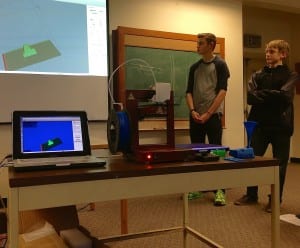
Tucker Hagerman and AJ Erickson give a presentation on the 3-D printer to the Petersburg School District Board. Photo/Angela Denning
“Now we’re going to cut to a sped up video of our printer printing our project here,” Hagerman tells the audience.
After the video, the teenagers pass around examples of objects that they made in school. There’s a red Lego piece, a black hard drive case, and a green Go Pro mount.
The teens are convinced that future applications are endless.
AJ Erickson explains how the school could save money by printing these little gadgets that prevent computer cords from breaking.
“So that it will last a little longer and you’d save $50 dollars a month on ordering new chargers,” AJ Erickson says.
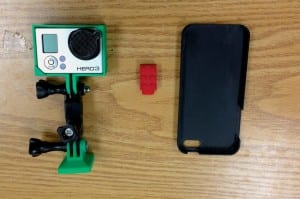
Some of the objects the students have made with the 3-D printer include a Go-Pro mount, lego pieces, and a hard drive case. Photo/Angela Denning
The plastic cord’s not too expensive at seven cents a gram. The euphonium mouthpiece used about $1.26 worth. Of course, the printer itself costs more, at $1,300.
How cost effective the 3-D printer is may be unknown at this point but one thing is for sure, these high school students are leading the way.
And in the meantime, Skipper Erickson will continue to use his new mouthpiece.
“If you’re playing in the cold, it’s a lot easier on your lips,” Erickson says.

